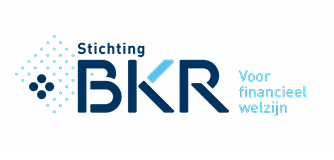
Challenge
Migrating the Central Credit Information System (CKI) to the cloud.
Target Audience
Banks and lenders.
Result
A modern event-driven cloud architecture.
Radical change for ICT department
Although the old system still worked fine, there were a number of challenges. The underlying mainframe environment was less attractive to IT developers, and BKR customers were increasingly demanding communication via APIs. “There were also security challenges with the old system. It was therefore really time to switch to a modern cloud architecture,” stated Gert Jaap Mooij, product manager at BKR Foundation.
The transition to the completely redesigned CKI was one in the ‘superlative’ category. The project took more than three years to complete. It meant a radical change for the ICT department of BKR Foundation. Mooij: “We had been making and maintaining our own software here for about fifty years. For this step to a new architecture and other programming tasks, we had to work closely with an external partner. Although at the start of the project we had the idea of doing this entirely with our own people, it soon became clear that this was not possible. The choice of Info Support as a partner turned out to be the right one.”
Better secure security needs in Microsoft Azure
BKR Foundation wanted to get rid of the mainframe on which the CKI was built. This system had been in use for over twenty years and was doing what it was designed to do. Randall van Zanten, Scrum Master at Info Support: “The age of both the application and the mainframe made it difficult to implement changes and keep up with the latest developments. In addition, few people are still available with knowledge of mainframes and associated programming languages. In this case, making changes would quickly lead to new construction.”
There was another reason for the change, according to product manager Mooij: “Securing data requires a lot of attention. We did that securing ourselves and is number one on our priority list. The Foundation’s board researched security needs. Due to rapid developments in the threat landscape, we came to the conclusion that those needs could be better secured with the capabilities offered by Microsoft’s cloud environment.”
Cloud-based architecture
The switch from an in-house development and mainframe environment to a cloud-based architecture led to more important choices, according to Mooij. “The transition to a cloud environment has a broad impact on the organization and requires specific expertise, for example.” Therefore, our assignment to Info Support was twofold: take us through the service-oriented architecture with all its associated components and train employees and show them what is possible on the Azure platform.”
The move to a new system also provided the opportunity for a change in thinking and doing. A critical look was taken at which components of the old system needed to be transferred to the new one, as well as any additions in the new CKI, Mooij said. To make the project a success, a lot of energy went into figuring out the necessary steps and the composition of the teams. In this process, Scrum and Agile project management played a key role.
Mixed teams and clear choices
The teams for both the development of the Azure environment and the software side were a mix of BKR people and externals. Mooij: “A good balance was really sought when putting the teams together. The CKI is a business-critical system that facilitates credit registration. Therefore, many different internal stakeholders are involved.”
A lot of energy was put into involving all those stakeholders in the project, according to Van Zanten: “That’s typically something in which Scrum plays an important role. You start delving into who you are working with, what role they play within the organization and how they are involved in the work that is on our backlog. How can we properly involve all internal users as well as customers in testing?” In addition, a pilot group was started. The task of this group was to test delivered features as early as possible in a uniform way.
The interface of those features may have remained the same, but you really need to find out what impact the changes will have on customer processes. That can only be done by testing this thoroughly with the customers themselves.Randall van Zanten, Scrum Master at Info Support
Trouble-free migration to the cloud with minimal downtime
The CKI is an important component in processes of banks and lenders. For that reason, it was very important that the migration to the new system went smoothly, Van Zanten says: “By adding a deployment manager to the team, we relieved the BKR. A flawless migration was of great importance, which is why we practiced the various steps of the migration more than thirteen times. As a result, the new CKI went into production without any problems and with minimal downtime.”
Knowledge assurance
Tough choices have been made, according to both BKR Foundation and Info Support. Van Zanten: “The transition to an event-driven cloud solution is an ambitious and forward-looking step, but then you have to secure the knowledge needed for it.” Mooij: “The knowledge assurance is very important. We benefited from that already during the project, but also at the end we gratefully used the training courses offered by Info Support.”
Mooij adds, “In addition, with the help of Info Support, Agile working was further shaped. We now know better how to set this up, how to bring people along and develop it further. We have carried that through to program management and communication. By the way, we still have a Scrum Master walking around. Scrum is something you have to integrate into the DNA of the organization. Pick it up, learn and improve. You have to gain experience and live it through.”
